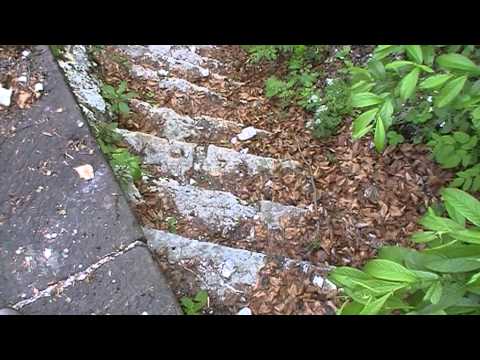Flood Dams, Klavže
Origin of the word
Klavže is a plural noun meaning "gates". It derives from the Latin clausura ("the closing"). The Slovenian term, however, was borrowed from the German die Klause which also means "the pass". In any case, the term denotes something that has not been permanently closed but is of a transient nature. The main characteristic of klavže is namely the closing and opening mechanism for the regulation of the water accumulation. The name of the war fortress Kluže near Bovec has the same origin.
History
The first klavže were built out of wood in the 16th century on the Zala River, but were too dependent on rainfall and high waters. Around 1770 the monumental klavže were built out of brick, stone and mortar, with the ingenuously designed mechanisms that required only a pair of oxen to lift or close the dam barriers, also in extreme weather conditions. The most grandiose klavže were those of a local, Master Mrak (1709–1786), positioned where the river Idrijca formed an 800-metre-long lake that could drive some 10,000 m3 of timber at a time downstream to Idrija, 20km away.
It has been calculated that the river Idrijca carried approximately 4,540,000 m3 of fuel wood and 375,000 m3 of pit wood and round timber. The transportation of timber via rivers ended in 1926, after catastrophic floods took away the rakes in Lenštat in the centre of Idrija. Being a klavžar ("dam operator") was a very responsible, but also highly valued, position among the people.
Brusove klavže on Belca River
Visit
The klavže attracted an audience already in the time when they were active. The opening of a dam and the noisy transportation of timber was an impressive performance of engineering ingenuity. The models of klavže and Lenštat rakes made by Janko Trošt aptly explain the whole process and can be seen in the Idrija Municipal Museum. The visit to one of the preserved sites remains, however, a unique experience.
For a few decades the abandoned klavže were decaying and became hardly accessible due to the lack of road maintenance. In 1968 the Municipality of Idrija proclaimed them as a first class technical monument and from 2001 onwards the following klavže have been protected as a cultural monument on a state level: Belčne klavže (also called Brusove klavže), Putrihove klavže (both close to Idrijska Bela) – built from 1767 till 1769 according to the plans by Jožef Mrak, Idrijske klavže (Vojsko), and Kanomeljske klavže (Gorenja Kanomlja, called also Ovčjak klavže), built in 1813 and considered the most beautiful.
See also
- Mercury mining heritage on Culture.si
- Idrija Municipal Museum
- Idrija Mine Museum
- Miner's House - Ethnological Collection
- Idrija Kamšt
- Cerkno Museum
